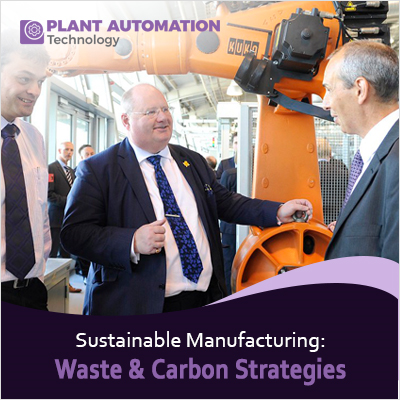Sustainable Manufacturing: Waste & Carbon Strategies

Introduction:
The landscape of manufacturing is undergoing a transformative shift as businesses increasingly recognize the importance of sustainability. Embracing eco-friendly practices not only benefits the environment but also presents manufacturers with opportunities to enhance efficiency and reduce costs. In this comprehensive exploration, we delve into the multifaceted realm of sustainability in manufacturing, focusing on the twin pillars of waste reduction and carbon footprint mitigation.
Reducing Waste:
1. Lean Manufacturing Practices: At the core of waste reduction, we find the principles of lean manufacturing. This approach involves a meticulous examination of production processes to identify and eliminate inefficiencies. By streamlining operations, manufacturers not only minimize waste but also optimize resource utilization, resulting in increased overall efficiency.
2. Recycling and Circular Economy: The adoption of recycling initiatives and embracing a circular economy model are pivotal strategies in waste reduction. Manufacturers can implement systems to collect, process, and reintegrate materials back into the production cycle. This not only minimizes the environmental impact but also contributes to the creation of a closed-loop system where waste is viewed as a valuable resource.
3. Product Design for Sustainability: Sustainable manufacturing begins at the design phase. Companies can reduce waste by creating products with longevity in mind, emphasizing recyclability, and designing for ease of disassembly. This approach ensures that the end product is not only environmentally friendly but also aligned with the principles of a circular economy.
4. Waste-to-Energy Technologies: Waste-to-energy technologies provide an innovative solution to the challenge of waste disposal. By converting waste materials into energy, manufacturers can simultaneously address the issue of waste management and reduce reliance on traditional energy sources, thereby lowering their carbon footprint.
Minimizing Carbon Footprint:
1. Energy Efficiency and Renewable Sources: Energy consumption is a significant contributor to a manufacturing facility's carbon footprint. Implementing energy-efficient technologies, optimizing machinery, and transitioning to renewable energy sources are crucial steps in minimizing this impact. Solar, wind, and other renewable sources offer sustainable alternatives that not only reduce emissions but also lead to long-term cost savings.
2. Supply Chain Sustainability: The concept of sustainability extends beyond the factory walls and into the supply chain. Manufacturers can collaborate with suppliers committed to eco-friendly practices, optimize transportation routes, and employ efficient logistics strategies. A sustainable supply chain approach ensures that the entire production process aligns with environmental goals.
3. Carbon Offset Programs: Recognizing that complete elimination of emissions may be challenging, manufacturers can participate in carbon offset programs. These initiatives involve investing in projects that capture or reduce an equivalent amount of carbon dioxide emitted elsewhere. By supporting such programs, manufacturers can balance their carbon footprint and contribute to global climate change mitigation efforts.
4. Employee Engagement and Innovation: An often overlooked but crucial aspect of sustainability is employee engagement. Training programs, awareness campaigns, and fostering a culture of environmental responsibility empower employees to actively contribute to waste reduction and carbon footprint minimization. Harnessing the collective creativity and commitment of the workforce can lead to innovative solutions and continuous improvement in sustainable practices.
Conclusion:
In conclusion, the journey towards sustainable manufacturing is a multifaceted one, requiring a holistic approach that encompasses waste reduction and carbon footprint mitigation. As businesses navigate this path, they not only contribute to global environmental conservation but also position themselves for long-term success in an increasingly eco-conscious marketplace. Embracing sustainability in manufacturing is not just a responsibility; it is a strategic imperative that fosters innovation, resilience, and a brighter, more sustainable future for all.






